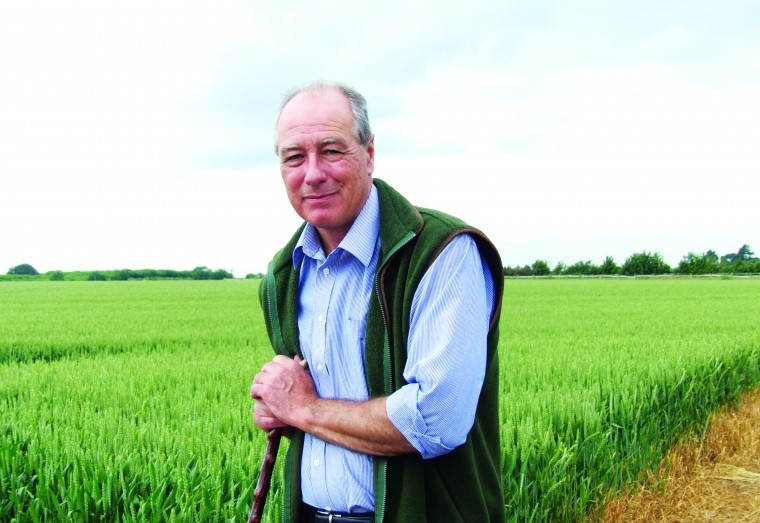To follow up the deluge of rain at the end of April, on 29 May Doddington and the surrounding areas had a massive thunder storm that saw just over 70 millimetres of rain in a couple of hours.
The rainfall was simply too rapid for the ground to absorb and it ran off any sloping ground into the dry chalk valleys of the North Downs and for a while they were no longer dry. Water was seen running off long term permanent pasture as well as woodland and as it accumulated into a torrent houses were flooded, roads were literally undermined and the tarmac lifted off the sub base. Roadsides were gullied out and large quantities of sediment accumulated at the low points on roads but also on driveways and in houses.
We filled an 18 tonne trailer with sediment from the village street which made it passable but by no means tidy and at some point there is still a lot of flint and gravel to be cleared. The roads where tarmac lifted need completely resurfacing and remain closed three weeks after the event. Sittingbourne and the Medway towns saw flooding where it had never been seen before and while there has been a lot of talk of inadequate drainage and maintenance, in practice this country does not plan or engineer for that level and intensity of rainfall.
In arable fields some spring sown winter bird seed cover crops were gullied out but luckily little of this sort of damage was evident in any winter or spring cropped fields. As the month has progressed after the flood it has been dry and what looked like a climatic extreme has helped crops come through a dry spell. Looking at oilseed rape it continues to fill and looks well, although judging the outcome at this stage is impossible. Of the conventional varieties, Campus looks particularly well with Elgar less happy and showing more disease. I would put Django with Elgar and it has not been especially strong all year. It would appear that oilseed will be early to harvest as it is filling rapidly at 17 June.
On our wheats we followed up with strong T2 fungicides and T3 as they flowered focusing on leaf emergence rather than time between sprays. For some crops the gaps were too long, stretching cover; and for others closer together than one would choose, but cover was essential. There is more disease in Siskin than one would like to see and Zulu and Siskin are both weaker as a stand than one would like even with the levels of growth regulator we have applied.
In both cases looking at spray misses around poles it is evident that fungicides have worked well in a high pressure septoria year and a developing brown rust year. We have seed crop of Zyatt and while it looked less clean early on it has recovered and also looks to have a strong standing ability. All crops seem happy with the weather and moisture levels at present and as long as we get adequate sunshine there is good potential. The crops with the poorest grassweed control all follow spring and winter beans where we simply could not achieve the control needed to prevent black and rye grass seed return. On the plus side we have seen pleasantly surprising control from spring applied Axial on ryegrass and Pacifica on rye grass and black grass to the point where we wished we had applied treatments to a couple more blocks of wheat.
The late spring barley has actually enjoyed the heavy rain and looks well. It will need more moisture to see it to a full yield but there is time and it is thick enough with adequate tillers. While not a fan of too much or indeed any spring cropping, it certainly helps with our grass weed strategy and despite the unknown market we will face for next harvest I am reconciled to having it in the rotation. It may yet prove to be a surprising economic result and certainly the best outcome will be less grassweeds in the following crops.
Picking up on the unknown marketing conditions for the 2019 harvest, all one can say is we are no clearer as the months keep slipping past and this government keeps kicking the can down the road missing deadline after deadline for substantive progress as far as Europe is concerned. As other issues emerge in Europe and the world I begin to fear Europe will just lose interest. Certainly the problem of immigration is becoming a major threat to European unity which is ironic as it was such an emotive issue in our referendum. It is a driver of the populist movements in most European countries and none more so than Germany and Italy.
Against this background, secretary of state Michael Gove has 44,000 responses to his health and harmony consultation. This was a good few less than expected with a sizeable number in the campaign format. DEFRA may have counted them but certainly has not yet analysed them. For those of you who took the time, thank you, and I hope it will be time well spent. My anxiety is that we are now promised an agriculture bill before the summer recess which does make one wonder how much influence the whole process will have on Gove’s thinking. He holds the future of farming in the UK in his hands. From the moment he was appointed it was clear he had the potential to make policy changes that could undermine our whole industry and so far nothing he has said or done has altered my personal view that is exactly what he is going to do.




